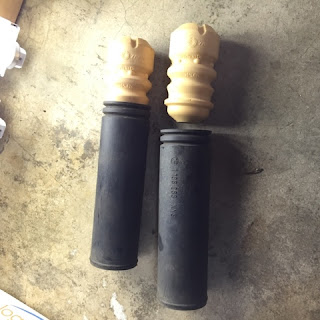Thanks to Brad at Parts European for donating two amps for tear down.
*My Original intent with this post was to dissect the inner workings of the stock amp and, gain better sound quality from it. Read below for more details. After some work, reading, thought, and ultimately time needed in other areas, this post stands as a what if. Nothing more.
I've been distracted by the after market. Given the low cost of small amps pulled me over to their side. I'll have more up and coming on that in future posts. I'm still prototyping mounting locations. This is my rough draft if you will so far:
Original Post:
I'd like to discover whats inside these guys and how/if I can get the rear channels before they are crossed over. In our quest for stereo goodness I need a full range signal to the rear coaxial pioneers in our setup. I'm jumping head long in to territory I know nothing about at all. I'm not an Electrical Engineer by any means. Given enough time and reading material one can be good at just about anything.
My thought is this: We only need about 25watts RMS to the speakers to get reasonable sound levels. If I can somehow get this from the stock amp or, stock amp parts, I don't have to fool around with mounting an aftermarket amp. Clipping harnesses, is really not an issue as you can get the pins from your current amp and make a harness for your after market amp fairly easily.
I've browsed many a forum, never posted. I've read a lot about how amps work. I've so far been able to identify what amplifies the sound however, I've got no idea where it goes from there.
We are peering into a Loewe, Low amp.
Those little flat raised silver pieces are what do the amplifying. They are called transistors. Cool stuff.
I know from many a wire diagram and, tracing out the wires, where the four channels come into the amp, from the radio. From there the signal goes through a series of resistors and capacitors. There appear to be several similarity configured items on this board. More noticeable from the bottom.
To get to the signals internally I need to understand which paths come into the transistors from the head unit and which leads they are output through. I reached out to Loewe to inquire about a wiring diagram for these circuits. Of course they were not able to furnish such because of private/proprietary knowledge or copyrights. I assumed that this would be the case. I mean why wouldn't it be. When a company puts time into making and designing something you can't just give out such knowledge to some random e-mailer.
This case will be up to me to crack. I've begun doing some more research into how transistors work in general. If I can find another similarly designed transistor perhaps I will have success in finding the output signals I need. This might just be a pipe dream, given my limited time, however, it is certainly an interesting prospect.











